#Beyond Visual Range
Text
Interview: MBDA-L&T joint venture aims to be lead private missile-maker in India
Interview: MBDA-L&T joint venture aims to be lead private missile-maker in India
L&T MBDA Missile Systems Limited director Arun Ramchandani tells our editor N. C. Bipindra in an interview during DefExpo-2022 that ‘Sea Ceptor‘ offering to the Indian Navy for its air defence requirement is a futuristic technology. The company is currently making MICA missile equipment in Coimbatore in Tamil Nadu for the Indian Air Force‘s Mirage-2000 requirement, apart from exporting them.
Q.…
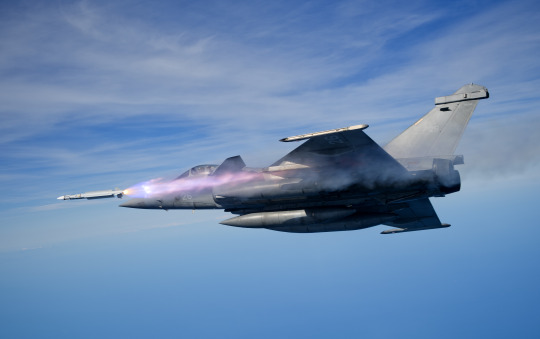
View On WordPress
#Aatmanirbar Bharat#Aatmanirbhar Bharat#Air Defence#Air Defence Missile#Air Defence System#Air Force#Anti-Tank Guided Missile#Army#Arun Ramchandani#ATGM#Atmanirbar Bharat#Atmanirbhar Bharat#Beyond Visual Range#BVR#Coimbatore#Combat Aircraft#Combat Jet#Fighter Aircraft#fighter jet#IAF#India#Indian#Indian Air Force#Indian Army#Indian Navy#L&T#L&T MBDA Missile Systems Limited#Larsen & Toubro#Larsen and Toubro#Make in India
9 notes
·
View notes
Text
So. I've Cracked The Code On The Appearance Changes in Side Order.
Wall of photos and such incoming.
After a lot of testing, I've discovered there are 7 different little lights and doodads that are added to Agent 8 via upgrading certain chips, each with a basic 1st tier and and upgraded 2nd tier. The 1st tier of upgrades appear after picking up two of the same chips in that changes pool (ex: 2 Homing Shots chips), with the 2nd tier appearing after picking up five of them (ex: 5 Homing Shot chips). There is no further visual indicators added for maxing chips that go beyond 5, such as Splash Damage or Rush Attack.
Full disclaimer: This is the result of researching a LOT of my own runs, so I can say this is true with about 95% certainty. If I labeled an ability chip in the wrong visual pool, please let me know!


Let's start with the basics - our control group. No Teal upgrades provide any visible changes to Agent 8 (or Pearl-bot for that matter), so I ran an all-teal palette to demonstrate.


First is likely one of the more requested visual changes - the Headset. The 1st tier sports a basic metallic earpiece, with the 2nd adding an antenna and eyepiece that match your primary ink color.
Maxing Splash Damage, Sound Wave Damage, Splash Radius, Special Charge Up, Turf Lucky Chain, Rush Knockback, and Homing Shots all provide the headset!


Next up is Ink Bubbles. The 1st tier shows transparent, slower bubbles flowing in 8's ink tank, with the bubbles being faster and more opaque in the 2nd tier.
Nabbing Poison Ink, Splat Ink Recovery, Ink Saver Sub, Ink Recovery Rate, Sticky Ink, and Explosion Knockback all provide Ink Bubbles.
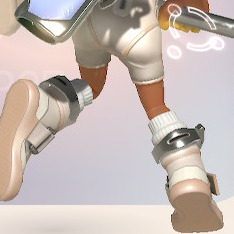

Following that is the Fins. The 1st tier shows the base shackles being added to 8's boots, with the fins themselves being added for the 2nd tier.
Picking up Run Speed, Swim Speed, Rush Attack, Mobile Ink Recovery, Mobile Special Charge, and Mobile Drone Gauge all provide the Fins.
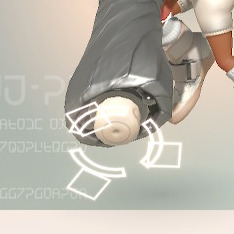

Now, moving on to the weapon upgrades!
First we have the Muzzle Lights, which appear at the muzzle of most weapons, and the sides of the brush and roller nearest the base. The 1st tier shows a circle and squares circling around the muzzle, with the 2nd tier being more exaggerated, with alternating squares and rectangles forming a hexagon pattern in the center.
These are exclusive to the Ink Damage, Main Damage (Close), and Main Damage (Distant) chips.
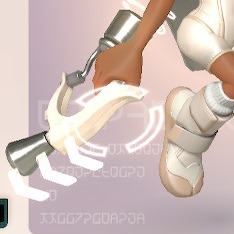

Next up is likely the most common visual one can see on their run - the Arrows. The 1st tier shows a circle with three arrows pointing down the weapon, with the 2nd tier adding some blowback markers behind the circle.
These are on a whopping TEN upgrades, being Splatling Barrage, Main Firing Speed, Horizontal Slash Speed, Main Range, Main Piercing, Main Ink Coverage, Rush Ink Coverage, Quick Charge, Shot Spread Reduction, and Ink Saver Main.


Last of the weapon upgrades are the Dots. The 1st tier is 3 large dots and a circle spinning at the bottom of your weapon or around your wrist, with the 2nd tier adding another circle around the dots.
These can be found on the Hindrance Damage, Ink Attack Size, Charge Storage, Moving Ink Speed, Extra Dodge Roll, Brella Cooldown, and Knockback upgrades.
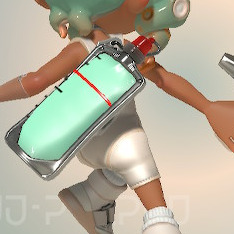

And finally, my favorite little knick-knack, the Shrimp Hook. This little guy appears on your ink tank after picking up 2 matching Luck upgrades (ex: Lucky Bomb Drop, Canned Special Drop, etc), and begins to glow after picking up 5. However, the glowing effect is not visible in the post-game screen. 😔 (I would totally buy one of these if someone made one, btw)
By the way, 7 visual upgrades * 5 chips needed to max each visual is 35 chips, which is just shy of the 36 total chips you can have on one palette, which means, in theory, you could. Have every maxed visual indicator on in one run.
Just a thought. : )
#splatoon#splatoon 3#side order#side order spoilers#agent 8#long post#sorry i have side order brainrot#look at my research boy
5K notes
·
View notes
Text
Astra: Ministry of Defence places order for first indigenous beyond-visual-range air-to-air missile
Astra: Ministry of Defence places order for first indigenous beyond-visual-range air-to-air missile
Astra: Ministry of Defence places order for first indigenous beyond-visual-range air-to-air missile
The Defence Ministry on Tuesday signed a contract with Bharat Dynamics Limited (BDL) for the supply of ASTRA MK-I Beyond Visual Range (BVR) Air to Air Missile (AAM) and associated equipment for the Indian Air Force and Indian Navy at a cost of ₹ 2,971 crore under Buy (Indian-IDDM) category.A…
View On WordPress
#air-to-air#astra#beyond-visual-range#defence#first#for#india#indigenous#ministry#missile#news#order#places
0 notes
Text
Whenever I see an up-and-coming Youtuber I notice they often make the same mistake. When the time comes to increase production quality, the absolute first thing you should do is invest in improving your sound. Not the camera or the lens or lighting or set design. Audio quality trumps all of that. People being able to understand what you are communicating should always be the highest priority.
And the cool part is you can do this with a cheap lav mic. There are some that can just plug right into your phone. The next priority is learning how to set levels and make sure your voice isn't distorting from being too loud. You can even record a little quiet and bump up the levels later on. But if you record too loud to begin with, you can't fix that.
After that you can "treat" your room. Which just involves controlling echo and reverb. Foam acoustic panels are expensive and not necessary. You can do the same thing by just filling your room with stuff. Furniture, books, blankets, pillows. You want to eliminate large flat surfaces. If the sound has to bounce around on 20 different surfaces before it comes back to your microphone, it will have much less energy.
You can also figure out which wall is the biggest echo offender and hang a couple of heavy blankets in front of it. If you can score those moving blankets on the cheap, those work great. And if you can put a gap in between the blankets that will further reduce echo/reverb. You don't have to cover the entire wall, just the main area in front of where you are speaking. If you can reduce that very first reflection, the sound will have much less energy to bounce off other surfaces.
All that said, sometimes people will go overboard with sound and buy that giant phallic SM7B dynamic microphone. I see those things everywhere. Yes, Michael Jackson used it and it does sound great. But with so many quality USB mics that plug straight into your computer, it is a huge hassle and really overkill unless you just enjoy audio tech and want a cool toy. The SM7B requires extra equipment to make it sound good. It's XLR so you need a special interface. And most people add a "cloudlifter" because it isn't very sensitive and can be really quiet without it. Plus, dynamic mics need to be super close to your mouth and I think covering half your face with a giant mic isn't the best visual. There are lav mics in a wide spectrum of price ranges that can be hidden and sound great. Or you can do a shotgun mic like they use in movies. It can be hidden offscreen and pick up your voice from a distance.
Big dynamic mics are great for people with baritone voices. If you are James Earl Jones and you want to show off your voice, the SM7B or something similar makes more sense. Beyond that, most of your viewers just want clarity. Good room treatment and a $30 lav mic can achieve that pretty well. And if you watch a few tutorials on how to EQ and process audio, you can do a lot to make a cheaper microphone sound great. Reaper is a wonderful audio program with professional features and a reasonable price.
TLDR... fix your sound first!
2K notes
·
View notes
Text
Aight I'm about to do something.
I'm going to define the generations of Warframe based on broad design principles and trends and I bet a bunch of people are gonna get their panties in a bunch over minutiae. I guess to prevent unnecessary "um actually"-ism in the notes I'll preface with
A. This is based on personal opinion and is not meant to be interpreted as provable or disprovable fact.
B. There will be outliers in every generation that buck trends and you don't need to point them all out.
G1 the Classic warframes. Being functionally prototypes of an un-finished and un-proven game the first generation of warframes had a lot to prove and not a lot to lean on. Generation one has rather limited mechanics and setups (some of which have been remedied post-release with reworks). Most generation one frames were very formulaic and laid the foundation for future warframe design;
First ability: Basic damage "bolt" attack.
Second ability: An escalation of the basic bolt, usually with higher damage and wider range. (May be replaced by a second special tactics ability)
Third ability: Special tactics ability, often for defense or support, has the most variety of functions.
Fourth ability: Global nuke (or exalted weapon if you're fancy).

G1.5 the Iteration warframes. Generation 1.5 was more varied than the originals, with some frames being continuations of the original formula but almost all of them adding novel mechanics to the game.

G2 the Exploration warframes. More consistent and bolder exploration of new mechanics and playstyles than the previous frames, going beyond iterating on formula and incorporating novel elements to more than just one or two abilities, the first generation of true experimentation.

G3 the Complete warframes. What sets this era of warframe design apart form others is the "completeness" of their kits, by which I mean no skill is divisible from the whole, they all work in conjunction to create a wholly unique playstyle. These interconnected and self-contained ability sets make these warframes exceptional in both the short and long term. Excalibur Umbra is something of an outlier in this generation and sort of belongs in his own category separate from both original and prime frames.
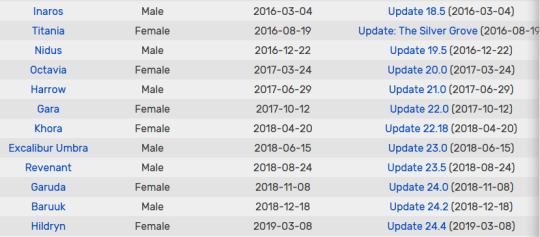
G4 the Style warframes. These warframes were mechanically a step backwards from the third generation, due to having overall shallower and less interconnected abilities. This is not to say that these warframes are bad or insufficient. While some of these frames prioritized aesthetic over performance they are overall successful and some manage to incorporate new novel mechanics and tools which were either not previously conceived or otherwise possible with old architecture.

G5 the Saturation warframes. This most recent generation is rather perplexing, seeming to run hot and cold. Lessons from all previous generations seem to be present, although not all are equally successful. With members that imitate the classics, dabble in iteration and experimentation, and attempt to capture both completeness and style in their visual and mechanical design. What can be said about this generation, unfortunately, is that while it attempts to tread new ground most of its members cannot avoid being compared to older warframes occupying the same niche and may be ultimately redundant. This may be in part due to the game's age and not necessarily a condemnation of the new frames' design.

79 notes
·
View notes
Video
The F-20 Tigershark
The Northrop F-20 Tigershark (initially F-5G) is a light fighter, designed and built by Northrop. Its development began in 1975 as a further evolution of Northrop’s F-5E Tiger II, featuring a new engine that greatly improved overall performance, and a modern avionics suite including a powerful and flexible radar. Compared with the F-5E, the F-20 was much faster, gained beyond-visual-range air-to-air capability, and had a full suite of air-to-ground modes capable of utilizing most U.S. weapons. With these improved capabilities, the F-20 became competitive with contemporary fighter designs such as the General Dynamics F-16 Fighting Falcon, but was much less expensive to purchase and operate.
Source: https://en.wikipedia.org/wiki/Northrop_F-20_Tigershark
81 notes
·
View notes
Text
Dropping random One Piece ideas bc this is it now. This is how I cope.
Buggy focused bc I love this little blue haired buffoon
Buggy
• AuDHD
• BPD
• gender is a performance and he LOVES THE SPOTLIGHT BABYYYY
• Buggy is actually a year or so younger than Shanks, and they both use this as an insult point for arguments. Buggy calls him old man, Shanks calls him a teeny tiny little clown baby, Buggy punches Shanks, Shanks cries dramatically, the works.
• in my perception between them, their relationship could go either way - I love the interpretation of them seeing one another as brothers, I love the interpretation of them being lovers, I think either one fits them and it's precious and depending on the Shuggy flavor of the day. It's never both at the same time though. One or the other.
• Buggy has always been terrifyingly flexible. It was waved off when he was very little, but it was only around the time Crocus joined the crew that he noticed Buggy was much more flexible than most kids his age. Turns out baby blue has hypermobility syndrome. The Roger pirates helped him learn wrapping techniques to help stabilize his wrists and knees and hips, his biggest problem areas, but after the Devil Fruit Fiasco, he can and will just drop a limb. Floating is so much easier on bad pain days.
• Buggy still wraps and braces his body when he can, but he also hides most of them beneath his clothes. Few have seen him freely in braces. Cabaji and Mohji are the most familiar with that. Ritchie takes his role thereof as a living, furry weighted heating pad.
• kinesthetic and visual stimming Buggy my beloved.
• sometimes he's just. Touch Alvida. Not in a weird way, just... her Devil Fruit makes her skin and hair feel absolutely DIVINE and he can spend hours just. Playing with her fingers or brushing her hair. He's embarrassed by it.
• he has a very meticulous skin and hair care routine. It's one of very few routines he keeps to. Not even being in prison stopped it.
• he's actually really damn good with money and running a business. The situation with the Cross Guild was a Bad Time, Bad Place, Bad Luck situation, which is honestly just his brand at this point.
• He was a warlord for all of a few months, but in that time, he did, in fact, have to attend a few meetings, and he did, in fact, make a friend! A friend nobody ever expected.
• Boa Hancock and Buggy are the most underrated Mean Girls Squad ever and I'll die on that hill, I think they'd be so funny as friends. Ask me more on my Boa Buggy Besties ideas please I am begging I love them so much
• Cross Guild happens, and it goes fairly similar to Canon, but Buggy quite literally within that three week time frame got the entirety of his loan back AND the interest and was like "hey so like. Did you still want this or-?"
• the mercenaries at Karai Bari are all very progressive. Buggy is a lax ruler, by most standards, but he puts his foot down firmly regarding bigotry, racism, sexism, etc.
• Buggy is not actually human, but he doesn't know that. He was orphaned at a VERY early age, was adopted by Roger pretty young, and he doesn't really remember much pre-piracy. He does know his genetics are a little weird, #ThanksCrocus, but not much beyond that. This may be Important later on if anyone wants some silly little concepts
• demisexual nblm, but once he catches feelings, he becomes a harlot harlequin
• once took off a limb and forgot where he left it. Has genuinely devoted microchipping his limbs.
• some people have comfort activities like hiking or painting. He makes bombs. It's very soothing and he likes the BOOM
• has a multitude of explosives btw; everything from large range, highly damaging, lethal weapons, to flashy, mildly inconveniences. He once made a batch of mini muggy balls full of itching powder just to see if he could and now it's his favorite thing to prank people with. ((Yes, he designed those while a Warlord. Yes, he tested it on the Navy. No, he was never definitively caught.))
• when he's busy, he ties his hair in a bun and puts pens, pins, etc in his hair, ends up looking like a porcupine or sea urchin.
• he has a really bad habit of hyperfixating for hours upon hours on end. Galdino, Alvida, Mohji and Cabaji have a rotation system to check on him if he hasn't been seen for 5 or more hours. They'll drag him away from his work (some more gently than others), make him eat, drink, etc. ((Alvida huffs and puffs about it, but she's also among the first ones to wipe a grease smear from his face, look him over head to toe and determine whether she's pulling the Girls Night card. She will die before admitting that she adores this bastard.))
• Buggy is allergic to pineapples.
That's all I got rn okay ily byyyeeee
#buggy the clown#buggy headcanons#one piece headcanons#buggy pirates#audhd buggy#bpd buggy#i have a terrible fixation on clowns#Buggy and Boa#shuggy#shanks and buggy
78 notes
·
View notes
Text
GOJO'S SIX EYES because we don't talk enough about what Gojo sees... and when you really think about it, it's TOO MUCH

First off, thinking about how freaking insecure I'd be if Gojo were real and he could see me.
That man's vision is beyond 20/20 when his eyes are uncovered... Aside from seeing cursed energy in incredible detail, he can probably see very fine details and that's scary.
He can see all the flaws. LITERALLY.
There's a panel in the manga that also revealed he can see someone's soul... WHAT THE FUCK. He perceives it the same way Mahito can.
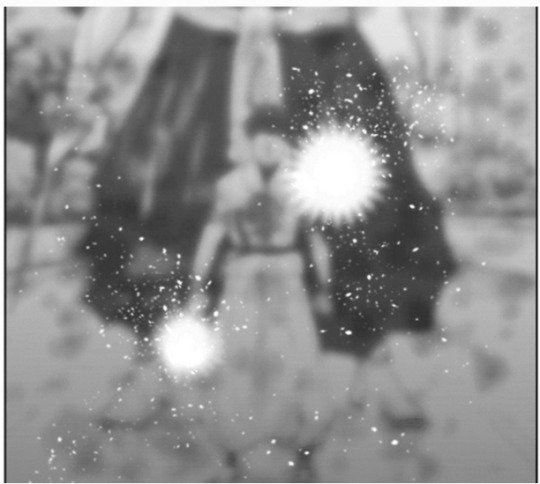
A normal human body to his uncovered eyes consists of physical and spiritual layers and he can see it.
Gege mentioned in a fan book that with the blindfold on, his vision is like a high definition thermal camera.
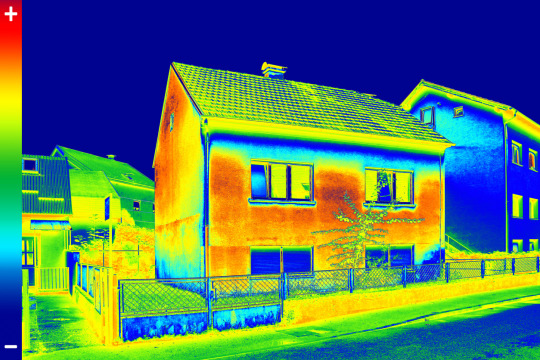
What does the world even look like to his naked eyes?
Do his eyes function like a microscope sometimes? Since, you know, manipulation of cursed energy to an atomic level and all that. And when he was a student, he passively mentioned learning how to detect poisons to essentially train his Infinity to recognize it as a threat and filter it out.
Speaking of manipulating cursed energy to an atomic level, Gojo would be great at physics, chemistry, and math. 🤷♀️
How far is his field of vision and how's the depth? Do the Six Eyes defy logic and Gojo has 340º vision? Like a bird of prey or something? Maybe not literally, but his visual perception probably is something similar to that or idk.
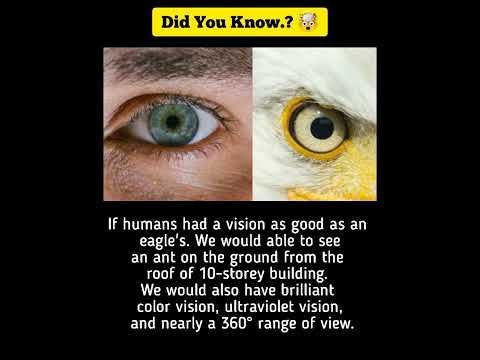
I bet he can see through his eyelids too.
Can he see through walls? It's insinuated that he can in Season 1 Episode 3, when Nobara was fighting that low Grade 3 Cursed Spirit. And he was wearing a blindfold.
Can he see other wavelengths of light? Infrared, radio, ultra-violet, X-ray, and gamma-ray?
The normal human eye interprets a limited range of light. Meaning, there are colors that normal people can't see. "Impossible colors" are a thing... And Gojo is not normal. Can Gojo SEE "IMPOSSIBLE COLORS"?
Gege... I know you hate the man, but give us a full breakdown of what the Six Eyes can SEE. I WANT TO KNOW. 😭 My imagination ain't enough.
His eyes got me on a spiral, and don't get me started on the amount of information his brain is probably processing every fucking day if his eyes are uncovered.
Also, if Megumi brings it up at some point, Gojo would DEFINITELY argue that he has better eyesight than a bald eagle. 💀
#jujutsu kaisen#jjk#gojo satoru#satoru gojo#gojou satoru#six eyes#gojo headcanons#jjk headcanons#jjk manga#jjk anime#wbad blog#wbad shit posts
111 notes
·
View notes
Text
I'm going to start teaching my nephews some basic colour theory; they're 9 and 10 and really passionate artists, and I think a little knowledge now will help them push themselves a lot further.
I'm going to start with colour mixing. I really think that color mixing using paint is a valuable metaphor even if you are working digitally 99% of the time. who knows what my nephews will end up focusing on as they get older, but having the metaphor of mixing paint to achieve different colors and understand how colors relate to each other visually should be a really useful ground level structure in any ongoing learning they do with color theory.
so I've put together a watercolor palette using student grade non-toxic paints. we've got two reds, two yellows, two blues, and burnt sienna.

I'm going to include white gouache as well, so we can talk about tinting colors, and how colors appear different when they are diluted versus tinted. also, honestly when I was their age I think watercolor was really punishing, and just bringing in some white gouache gives them a chance to rework areas if they want to. I'm hoping this makes stuff a little less frustrating and helps them feel more empowered to keep fixing and pushing their work instead of just giving up.
I don't currently have a plan to have black paint in there right now, because I want us to focus on color mixing, but I wouldn't on principal prevent them from having a pan of black paint in future for their own time with the paint. I just think it might be distracting or confusing when I'd rather we focus on mixing neutrals with these colorful pigments.
I've got five Windsor and Newton Cotman brand pans - phthalo blue, lemon yellow, cadmium yellow hue, cadmium red medium hue, and burnt sienna; and the other two pans i filled with van Gogh brand tube paint - ultramarine deep and madder lake deep.
This gets me a decent spread of secondaries without confusing anything by introducing the CMY approach.

I think learning the CMY palette will be valuable too! but it made sense to me to start with palette that most resembled what they are likely to be learning in school in terms of subtractive color mixing. if they do learn about additive color mixing, they'll be working with the cmy palette with light, so I figure I'll let this be different at the moment.
I've included burnt sienna after weighing my options, because I think it's important for them to learn how to neutralize colors in a few different ways. burnt sienna and ultramarine blue are such a classic neutral formula, and such a great way to mix something that's nearly black, that it felt important to include. the fact that when you mix it with the phthalo blue you get a green instead of a neutral, I think that's a really great example of how color mixing can be surprising as well.
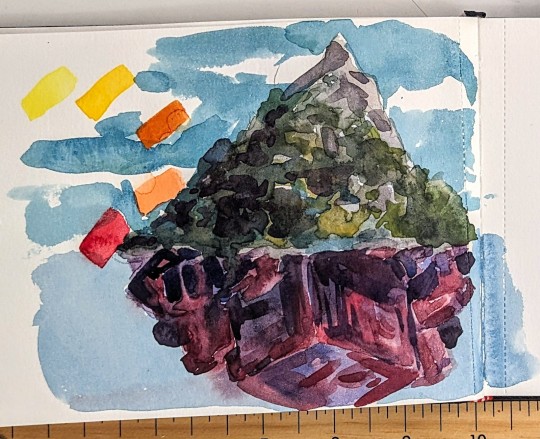
I'm working on a couple little example paintings to help them see the range that is possible with this palette, so here's one with greens and purples; I'll do one in neutrals overall and another maybe in oranges and teals.
I think for exercises we might want to work up to the colour wheel - maybe starting first with the basics of mxing using different rations to get different colours, and go from there.
If anyone has any advice on teaching this to 9 and 10 year olds, I'd love to hear it! I think they'll be excited to try something new and open up more possibilities for themselves as artists right now; beyond that I won't be particularly intense about it.
Also, do you remember when you learned paint mixing and basic colour theory? What were some moments that stood out to you or stuck in your mind forever?
55 notes
·
View notes
Text
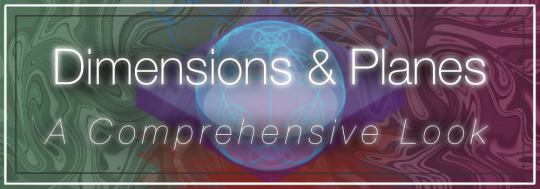
Title: Dimensions & Planes: A Comprehensive Look
Related Reading:
The Energetic Senses
Visualization, Reiki, & Fascism
Astral Projection Basics
Conceptualization Vs. Visualization
Bias in Witchcraft
Basics of Warding
Introduction to Gnosis
Important note: A lot of information in this post has its origins from Theosophy (The core of New Age ideology) and is an integral part of a fascist pipeline. All high-risk concepts will be highlighted in red. Please use discretion when researching further into these topics. Researching for this article myself was very difficult and time consuming. The last thing I want to do is misinform others or provide sources that will lead my readers into a fascist pipeline.
The exploration of dimensions and spiritual planes has captivated human curiosity for centuries. From scientific inquiries into the nature of space and time to metaphysical explorations of unseen realms, these topics invite us to contemplate the mysteries that lie beyond our ordinary perception. In this comprehensive study, we delve into the intricate concepts and implications of dimensions and spiritual planes, transcending the boundaries of conventional knowledge and venturing into the realm of the unknown.

Understanding Dimensions
Dimensions, in scientific parlance, are fundamental parameters that define the structure and geometry of the universe. They serve as coordinates within the framework of space and time, facilitating the measurement and description of physical phenomena. Dimensions provide the framework through which the spatial and temporal extents of objects and events can be comprehended and quantified. It is important to distinguish between physical dimensions and their metaphysical, spiritual, & energetic counterparts. Physical dimensions relate to observable spatial and temporal extents that can be directly perceived and measured. Beyond the dimensions that our senses can apprehend, there are postulated higher dimensions that transcend our perceptual limitations. These higher dimensions are hypothesized to exist based on various scientific theories. While we can't directly perceive these dimensions, their existence is inferred through mathematical models and theoretical frameworks such as string theory and M-theory. These dimensions can become intuitive with study and regular exposure to conceptualizations of their behavior and properties.
String theory postulates the existence of additional compactified dimensions that are curled up and imperceptible at macroscopic scales. These dimensions are believed to influence the behavior of subatomic particles and underlie the fundamental forces of nature. M-theory extends this notion by encompassing multiple possible geometries and allowing for a broader range of dimensions. Multidimensional models, built upon principles of topology, provide mathematical frameworks to explore the complex structures and dynamics of higher-dimensional realms.
It is important to note that String and M-theory has been mostly dismissed in the scientific community as a purely mathematical experiment rather than an operable model.

Exploring Spiritual Planes
It is so important to discern genuine information from the influence of the Theosophical Society, which has at times distorted and popularized certain aspects. The society's appropriation and misrepresentation of spiritual concepts, such as the astral plane, have led to a bastardization of authentic beliefs. For example, the Theosophical Society popularized the notion of the astral plane as a realm inhabited by disembodied entities, deviating from its original context within esoteric traditions.
The concept of spiritual planes spans across diverse belief systems and religions, each offering unique perspectives and interpretations. For instance, in Hinduism, the concept of "lokas" refers to different realms or planes of existence, such as the physical realm (Bhuloka), the celestial realm (Svarloka), and the abode of the divine (Brahmaloka). Similarly, in Buddhism, the notion of "Buddhafields" represents different realms where enlightened beings reside, such as the Pure Land of Amitabha Buddha. Throughout history, spiritual planes have played a significant role in the practices and rituals of various cultures. Ancient Egyptian civilization, for instance, held a strong belief in the existence of the Duat, an underworld realm where the souls of the deceased traversed. Indigenous cultures worldwide have embraced the concept of otherworldly realms, such as the Aboriginal Dreamtime in Australia, which encompasses the spiritual dimension of creation and ancestral connection.
While the specific characteristics of spiritual planes may vary, some common elements emerge across different belief systems. These include the presence of heightened consciousness, divine energies or entities, transformative experiences, and access to higher knowledge. Spiritual planes are often described as existing beyond the physical realm, serving as realms of expanded awareness and connection to the divine or transcendent forces.
Spiritual planes encompass a range of realms beyond our immediate sensory perception. The astral plane, often discussed in esoteric traditions, is considered a realm of psychic and emotional energies. The ethereal plane is described as a realm of subtle energies and spiritual beings. Beyond these, the celestial planes are associated with realms of higher consciousness and divine presence. It is important to note that the categorization of these planes can vary across different belief systems.
The interactions between dimensions and spiritual planes are subjects of great interest and contemplation. While dimensions pertain to the structure of space and time, spiritual planes exist beyond these physical dimensions, yet are intricately connected to them. Spiritual planes are often described as existing in parallel or interpenetrating dimensions, coexisting alongside the physical realm. They are accessed through altered states of consciousness, deep meditation, prayer, mastery of energetic practices, or ritual practices. These interactions enable communication, guidance, and spiritual experiences, providing opportunities for personal growth, enlightenment, and union with the divine.

The Astral Plane
The astral plane is believed to exist parallel to the physical realm. It is often described as an interconnected network of subtle energies and vibrational frequencies that permeate the universe. However, it is important to note that the astral plane does not occupy a specific location in physical space as we understand it. Rather, it is a realm of consciousness and energy that can be accessed through altered states of awareness.
The history of the astral Plane is closely intertwined with esoteric and mystical traditions from various cultures (*1a) throughout human history. However, it is crucial to distinguish between genuine esoteric teachings and the popularization of the astral plane in certain New Age and Christofascist movements. Some individuals and groups have appropriated and distorted the concept of the astral plane, aligning it with their own ideologies and personal narratives.
A prevalent misconception surrounding the astral plane is the belief that it is inhabited by spiritual entities or beings. However, it is important to note that the astral plane itself is not a dwelling place for independent entities. Rather, it is a realm of energy and consciousness that reflects the thoughts, emotions, and intentions of individuals who access it. The perception of entities in the astral plane often arises from personal narratives, personal beliefs, or symbolic representations rather than the existence of actual separate beings. These narratives often stem from individuals who do not genuinely access the astral plane.
Perception and interaction with the astral plane vary among individuals and spiritual practitioners. It is commonly experienced through altered states of consciousness, such as deep meditation or astral projection. (*2a) However, it is important to note that the astral plane is not accessed through visualizing or imagining specific entities or landscapes. In fact, relying heavily on visualization during astral experiences can be a sign of failing to enter the authentic astral plane, as it indicates a reliance on mental constructs rather than a true connection. In order to enter the astral plane, one must break away from their physical body and move into their subtle body (astral form). Visualization is a mental and physical process and will keep a practitioner locked in their body.
For witches, the astral plane can serve as a valuable tool for spiritual exploration (*3a), self-discovery, and magical practice. By accessing the astral plane, witches can tap into aspects of their own being, gain insights, and work with potent subtle energies that they normally have difficulty accessing. They may engage in astral travel to gain knowledge, receive guidance (*4a), or create complex and sprawling energetic constructs. The astral plane can also be a space for ritual work, spellcasting, and experimentation.
1a: When trying to research the history of the astral plane, nearly all the information originates from the Theosophy Society.
2a: Many of the altered states and meditations (often guided) that are online or are in texts are mostly, if not entirely, based in New Age practices.
3a: Spiritual exploration, if not done responsible can very easily lead to cognitive bias.
4a: Seeking knowledge or guidance from the astral plane without experience and critical thinking leads to logical fallacy.

The Dream Plane
The dream plane is a fascinating realm of consciousness that exists parallel to our waking reality. It is a domain where dreams unfold and where the mind explores and experiences a multitude of scenarios and emotions. Unlike physical locations, the dream plane is not bound by conventional notions of space and time. It transcends the limitations of the physical realm, offering a platform for profound exploration of the subconscious mind.
Throughout history, dreams have held significant cultural and spiritual importance in various societies. Ancient civilizations, such as the Egyptians, Greeks, and Native Americans, recognized the profound insights and messages that dreams could convey. Dream interpretation was considered an art, with dreams being seen as portals to hidden truths, divine messages, or glimpses into the future. These cultural perspectives highlight the belief in the dream plane as a gateway to the mystical and the profound.
One common misconception regarding the dream plane involves the belief in the existence of entities or supernatural beings within dreams. However, it is important to understand that dreams primarily originate from the depths of the dreamer's own mind. The various characters, events, and environments encountered in dreams are often representations of personal experiences, emotions, and subconscious processes, rather than external entities or supernatural phenomena.
As far as science understands, the dream experience is a complex interplay of psychological and physiological processes. While dreams are commonly associated with the processing of subconscious thoughts and emotions, they offer more than mere symbolic representations. Dreams can provide profound insights, creative inspiration, and problem-solving abilities. They offer a unique window into the mind's inner workings, allowing for personal growth, self-reflection, and a deeper understanding of one's own psyche.
The dream plane is a realm of limitless possibilities, where the dreamer can navigate and interact with a rich tapestry of dream environments and experiences. Within this realm, the dreamer's thoughts, emotions, and beliefs shape the dream landscape, influencing the unfolding events and the overall dream experience. The dream plane becomes a canvas upon which the dreamer's subconscious and conscious mind converge, creating a personalized and dynamic dream narrative. During a dream, the dreamer becomes the space and is capable of experiencing any and every aspect of the space from any and every vantage point. While the dream plane is technically a zero dimensional space, the mind and subtle body generate as many dimensions as necessary in order to facilitate the dream. Small pocket spaces are generated that house aspects of the dreamer’s subconscious which are pulled from during the generation process. Time within the dream plane often behaves in a nonlinear and fluid manner, defying the constraints of our waking reality. Dreams can compress or expand time since they exist outside of time and space, enabling the dreamer to experience a significant passage of time within a brief dream episode or to condense extended periods into a fleeting moment. This time dilation and distortion within the dream plane add to the surreal and immersive nature of dream experiences. Furthermore, due to the method dreams are generated here, the dreamer moves through areas of the space that are dedicated to their subconscious. This is typically where the “vibe” of the dream is ingrained. Most of the dream is actually in these areas.
Dreamwalking is a unique phenomenon that involves consciously traversing the dream plane while in a state of lucidity. It differs from regular lucid dreaming as it encompasses the intentional exploration of other dreamers' dreams or venturing beyond the confines of the dream plane itself. Dreamwalkers possess an extraordinary ability to navigate and interact with dreams beyond their personal realm, connecting with other dreamers or accessing extradimensional realms within the dream space or beyond. This practice opens up a realm of possibilities for expanded consciousness, interconnectivity, and multidimensional perceptions. Think of the dream plane as a nexus where all planes and spatial dimensions connect. From this nexus, Dreamwalkers may leave and traverse anywhere. Due to the lack of time in the dream plane, a Dreamwalker may also traverse through any point in time when they leave the dream plane.
It is important to note that Dreamwalking is not an easy or common practice. The improper practice of Dreamwalking (or the narrative that one is doing so when they aren’t) can lead to cognitive bias. Some of the best ways to identify Dreamwalking are: Waking not feeling rested at all, remembering 100% of the dream- even the subconscious areas, waking with bloodshot eyes, feelings of being disconnected from the body for several hours after waking.

The Mental & Causal Planes
These planes originate 100% from Theosophy. Please use discretion when reading about or researching them.
The mental plane represents a realm of consciousness that transcends the physical and material dimensions. It encompasses the vast landscape of thoughts, ideas, and cognitive processes (*1b) that shape human experience. Within the mental plane, the mind operates on a heightened level of awareness, exploring the depths of intellectual inquiry, analysis, and creativity. It is a realm where abstract concepts, mathematical principles, and philosophical musings come to life (*2b). Examples of the mental plane's characteristics can be found in the insights and intellectual breakthroughs experienced by scholars, scientists, and artists (*3b). It is a domain where the mind's potential is unleashed, offering glimpses of universal truths and the interconnectedness of knowledge.
The causal plane resides beyond the realm of thoughts and ideas, diving deeper into the essence of existence itself. It represents the underlying causes and fundamental principles that shape the physical reality (*4b). The causal plane is the realm of pure potentiality, where the seeds of manifestation are sown. It transcends linear time and holds the blueprint for the unfolding of events and experiences in the physical world. Understanding the significance of the causal plane allows for a deeper comprehension of the interplay between cause and effect, and the power of intention to shape reality.
Consciousness plays a pivotal role in accessing and navigating the mental and causal planes. It is through consciousness that individuals can transcend the limitations of the physical world and tap into the higher realms of existence. Higher awareness enables a deeper understanding of the workings of the mind and the interconnected nature of all things. It allows individuals to transcend the confines of ego and tap into the collective consciousness, accessing profound wisdom and insights that surpass individual intellect (*5b).
Various practices can facilitate the exploration of the mental and causal planes, enabling individuals to expand their consciousness and delve into the depths of their inner being. Meditation serves as a powerful tool for quieting the mind, enhancing focus, and cultivating a state of heightened awareness. Through meditation, individuals can access deeper levels of consciousness and explore the realms of thought and intuition. Additionally, practices such as mindfulness, self-reflection, and introspection provide opportunities for self-discovery and accessing the wisdom of the mental and causal planes.
The mental and causal planes hold immense potential for practitioners of witchcraft. By tapping into these realms of consciousness, witches can enhance their magical practices and expand their understanding of the interconnectedness of all things. The mental plane provides a platform for the formulation of spells, rituals, and intentions, allowing for the cultivation of focused and directed thought energy. The causal plane, on the other hand, holds the keys to the underlying causes and forces that shape magical manifestations. By aligning with the energies of the causal plane, witches can amplify their intentions and manifest desired outcomes in the physical world (*6b).
1b: I have found zero support for these concepts that can’t be explained by imagination or visualization.
2b: Nearly all descriptions I’ve come across are all misunderstandings or misinterpretations of concepts found in science and math. 3b: I found zero first hand testimonies from qualifying individuals.
4b: This can easily be used to justify biases and elitism.
5b: See cognitive and confirmation biases.
6b: While alone, this idea isn’t inherently an issue, in the context of the rest of the topic, could easily lead witches to ineffective practices.

Intuitional Plane
This plane originates 100% from Theosophy. Please use discretion when reading about or researching it.
The intuitional plane represents a realm of consciousness that taps into the depths of inner knowing and wisdom. It transcends the limitations of rational thought and linear logic, allowing individuals to access insights, truths, and guidance that arise from a deeper, intuitive understanding (*1c). The intuitional plane is a gateway to the realm of instinct, gut feelings, and subtle perceptions that reside within each individual (*2c). It is a realm where knowledge arises effortlessly, bypassing the need for conscious analysis or external validation. The intuitional plane invites individuals to trust their inner guidance and connect with the wisdom that lies beyond the realm of ordinary perception (*3c).
The intuitional plane operates beyond the realm of visualization, offering a profound experience of direct knowing. It is not dependent on mental imagery or pictorial representation but rather arises as a deep inner resonance and understanding. Perceiving the intuitional plane involves a heightened sensitivity to subtle energies, a receptivity to inner nudges and whispers, and an openness to the spontaneous flow of intuitive insights. It is a realm that can be accessed through stillness and quieting of the mind, allowing the intuitive faculty to arise naturally and effortlessly.
Within the intuitional plane, individuals can explore a wide range of uses and applications. It serves as a wellspring of creativity, enabling artists, writers, and innovators to tap into new ideas and inspirations. It offers guidance and insights for decision-making (*4c), helping individuals navigate life's challenges and make choices aligned with their deepest values and purpose. The intuitional plane also provides access to spiritual insights and transcendent experiences (*5c), offering glimpses into the interconnectedness of all things and the nature of the divine.
Cultivating a receptive and open mindset is key to expanding intuitive capacities. This involves letting go of preconceived notions, suspending judgment (*6c), and embracing a sense of curiosity and wonder. Engaging in practices such as meditation, mindfulness, and self-reflection can help quiet the chatter of the mind and create space for intuitive insights to emerge. Developing self-awareness and attuning to one's inner sensations and feelings can also enhance intuitive abilities, as it allows individuals to discern the subtle cues and signals that arise from the intuitional plane.
There are various techniques that can be employed to access and utilize intuitive guidance from the intuitional plane. Journaling and reflective writing can serve as powerful tools for tapping into intuitive insights. By engaging in free-flowing writing and allowing thoughts and impressions to emerge without judgment, individuals can access the intuitive wisdom that arises from within. Engaging in creative practices such as art, music, or dance can also facilitate the expression of intuitive insights and enhance the connection with the intuitional plane. Additionally, practicing active listening and deepening one's capacity for empathy can help individuals attune to the intuitive messages that arise through interpersonal interactions and subtle energetic cues.
1c: This mentality can very quickly lead to cognitive bias.
2c: I found no supporting arguments for this plane’s existence outside of personal narratives and visualization.
3c: Giving too much trust to spiritual means of acquiring information will lead to multiple logical fallacy.
4c: No one should ever rely on magical or mystical means when making life changing or major decisions.
5c: This concept can easily be used to enforce personal narratives.
6c: Letting go of judgement when dealing with concepts and practices within a new age practice is asking to fall into fascism. See new age conspiracy theories and fascist propaganda.

Other Esoteric Planes
Beyond the realms of the astral, mental, causal, and intuitional planes, there exist a myriad of other esoteric planes waiting to be explored. While the exact number and nature of these planes may vary across different spiritual traditions and belief systems, they collectively contribute to a lot of esoteric knowledge and offer diverse avenues for spiritual exploration. Each of the following planes either originate from or were heavily influenced by Theosophy. Please use discretion.
The Ethereal Plane: a realm of subtle energies that underlie the physical universe. It is often described as a bridge between the physical and spiritual dimensions (*1d), serving as a conduit for the flow of life force energy. In this plane, one can explore the interconnectedness of all things and gain insights into the energetic dynamics that shape our reality. This plane is also inhabited by spiritual entities.
The Celestial Plane: The Celestial Plane represents realms of heightened spiritual consciousness and divine presence (*2d). It is often associated with celestial beings, transcendent states of bliss, and profound spiritual insights. Exploring the celestial plane offers seekers the opportunity to connect with divine wisdom (*3d), experience states of unity and oneness, and deepen their understanding of the cosmic order.
The Akashic Plane*: The Akashic Plane, also known as the Akashic Records, is described as a vast reservoir of collective knowledge and information. It is said to contain the records of all past, present, and future events, as well as the thoughts, emotions, and experiences of all beings. Accessing the Akashic Plane allows individuals to tap into this expansive library of wisdom and gain insights into their soul's journey and the interconnectedness of all life (*4d).
The Transcendent Plane: The Transcendent Plane represents the highest realms of spiritual realization and non-dual awareness. It transcends the limitations of form and duality, offering seekers a direct experience of the timeless and formless nature of existence. Exploring the Transcendent Plane involves surrendering the individual ego and merging with the infinite consciousness that underlies all creation (*5d).
1d: As far as I could find, the type of spiritual entities aren’t ever really specified beyond “angels”.
2d: Typically anything that heightens spiritual consciousness and connections with the divine or anything along those lines is a set up for bias and godphoning/manipulation.
3d: Given the context of this practice, “divine wisdom” is a means of spiritual elitism and gatekeeping.
4d: See cognitive bias. This practice can be used and manipulated to justify nearly any action, ideology, prejudice, or preference. Creates an environment perfect for elitism.
5d: A bastardization of the concept of enlightenment found in some Buddhist and Hindu practices.

Navigating the Spiritual Planes
Embarking on a journey to explore the vast realms of the spiritual planes requires the utilization of various tools and practices. These tools serve as gateways to higher states of consciousness and facilitate the exploration of multidimensional realities. By engaging in specific practices, seekers can enhance their capacity to navigate the spiritual planes and connect with the profound wisdom and transformative experiences they offer.
Meditation stands as one of the foundational practices for navigating the spiritual planes. Through focused attention and mindfulness, individuals can quiet the mind, transcend the limitations of the physical body, and tap into higher states of awareness. By cultivating a deep sense of presence and inner stillness, practitioners can access expanded states of consciousness and explore the depths of their being.
Lucid dreaming serves as another powerful avenue for multidimensional exploration. This practice involves becoming aware within the dream state, enabling individuals to consciously interact with and navigate the dream environment. By honing the skill of lucidity, seekers can harness the potential of the dream plane as a platform for spiritual growth, self-discovery, and even interaction with non-physical entities or aspects of their own psyche.
Out-of-body experiences (OBEs) offer yet another avenue for traversing the spiritual planes. During an OBE, individuals perceive themselves as existing outside their physical bodies, allowing them to explore different dimensions, realms, or even visit other states of existence. Through various techniques such as astral projection or remote viewing, seekers can expand their consciousness beyond the constraints of the physical body and venture into uncharted territories.
Gnosis is one of the most reliable methods for entering a spiritual plane. Through a state of gnosis, a practitioner may become so engulfed in the conceptualization of the plane that their physical body almost seems to melt away.
Shamanic practices, deeply rooted in various indigenous traditions, provide profound methods for navigating the spiritual planes. Shamanic journeying involves entering an altered state of consciousness through rhythmic drumming or other techniques, enabling individuals to connect with spirit guides, ancestors, and the energetic realms beyond the ordinary perception. Through the use of sacred rituals, plant medicines, and spiritual ceremonies, practitioners can access profound states of consciousness and engage in transformative experiences within the spiritual planes. Be very conscious when trying shamanic practices as a lot of them are either closed or appropriations of closed cultures. Remember to be respectful and aware.
Seeking guidance from spiritual teachers and traditions can provide valuable insights and support in navigating the spiritual planes. These teachers, who have often dedicated their lives to spiritual exploration and practice, offer wisdom, techniques, and guidance based on their own experiences. By studying under the tutelage of these teachers, individuals can receive guidance on the practices, rituals, and approaches that facilitate safe and transformative journeys through the spiritual planes. However, please bear in mind that a lot of these concepts have their root in New Age practices and ideologies. Due to this, many “guides” and “teachers” actually commodify their services, which will likely not even be genuine. Many predatory capitalist practices exist within the New Age community. Reiki is an excellent example.

Spatial Dimensions & Witchcraft
Spatial dimensions play a significant role in the practice of witchcraft, offering a framework through which magical energies can be understood and harnessed. By exploring the connection between spatial dimensions and witchcraft, practitioners can deepen their understanding of the metaphysical realms they work with and enhance their magical abilities.
Incorporating dimensional concepts into magical practices allows witches to tap into the vastness and complexity of the multiverse. It involves recognizing that the physical world we perceive is just a small subset of a larger reality encompassing multiple dimensions. This expanded awareness enables witches to navigate and interact with different energetic planes and dimensions, facilitating more profound connections with spiritual forces. Rituals and spells focused on exploring and harnessing spatial dimensions serve as gateways for witches to access properties of space that most typically do not consider. For example, by perceiving and working with higher dimensions of space, witches can expand their perception and influence beyond the limitations of three-dimensional reality. This expanded awareness can enable them to sense subtle energies, communicate with spirits, and navigate intricate energetic networks.
Incorporating higher dimensions into the creation and maintenance of wards significantly enhances their potency and effectiveness. Wards, which are protective barriers or enchantments, can be fortified by utilizing the spatial dimensions to create complex and multi-layered structures. By extending the wards into higher dimensions, witches create a more intricate and resilient defense against negative energies, malicious entities, or unwanted intrusions. The incorporation of higher dimensions allows for a broader scope of protection, encompassing not only the physical realm, but also the spiritual and energetic planes. Furthermore, the utilization of higher dimensions in spirit and energy work opens up new avenues for witches to connect with and channel divine forces. By aligning their energy with the higher-dimensional aspects of the spiritual realms, witches can access heightened states of consciousness and tap into the abundant energies present in these dimensions. This can enhance their ability to communicate with spirits and manifest their intentions with greater clarity and potency. A lot of spirits exist across a multitude of higher and lower dimensions. Becoming aware of and working within these dimensions can give a practitioner a better understanding of how these entities experience their realities, granting the practitioner a sense of empathy for the spirits they interact with.
It is essential to note that incorporating dimensional concepts into witchcraft requires a balanced approach, grounded in knowledge and discernment. While working with spatial dimensions can be empowering and transformative, it is crucial to maintain an awareness of cognitive bias due to the lack of methods of confirmation. Practitioners should be mindful of the interconnectedness of all dimensions and the potential consequences of their actions. This includes practicing consent and respect when working with spirits or other entities from different realms and being aware of the potential impact on workings.

The Limitations and Challenges of Understanding Dimensions and Spiritual Planes
The study of dimensions and spiritual planes is not without its limitations and challenges. Skepticism and criticism from scientific and religious communities often arise when discussing these topics, as they may be perceived as esoteric or outside the realm of empirical observation. Scientific rigor demands empirical evidence and reproducibility, which can pose challenges when investigating phenomena associated with dimensions and spiritual planes that may transcend the physical world.
Subjectivity and interpretation also play a significant role in the understanding of spiritual experiences. Each individual's perception and interpretation of these experiences can vary, making it challenging to establish objective criteria for evaluating or measuring spiritual dimensions. Personal beliefs, cultural background, and individual experiences all contribute to the subjective nature of spiritual exploration.
Moreover, spiritual exploration is not without its potential dangers and pitfalls. It is essential for individuals to approach these realms with caution and discernment. Without proper guidance and understanding, one may become susceptible to misinformation, manipulation, or falling into the trap of self-deception. In the quest for spiritual enlightenment, individuals must exercise critical thinking and discernment to avoid being led astray by misleading ideologies or dogmas.
Furthermore, the quest for knowledge and further research is an ongoing process in the study of dimensions and spiritual planes. As our understanding of the universe and consciousness evolves, new insights and theories may emerge, challenging existing frameworks and expanding our understanding of these phenomena. The scientific community continues to explore and investigate these topics, utilizing diverse methodologies and interdisciplinary approaches to shed light on the nature of dimensions and spiritual planes.
However, it is crucial to be aware of the potential dangers of encountering fascist propaganda while researching spiritual planes. Theosophy, with its historical associations with white supremacy and fascist ideologies, has left a lasting impact on spiritual communities. Therefore, it is necessary to approach information originating from theosophical sources with caution, critically evaluating its content and context to avoid inadvertently perpetuating harmful ideologies or misinformation.

Patron Shoutouts!
Megan Kipp
Jinsu
Ing Mar
Cosmicaquamarie
Thank you for your continued support! My patrons help me maintain the drive to create content and help me keep food in my pantry.

My patrons of Mystic tier and higher had access to this article at least a week before it was public! To see other perks of supporting me, click here!
This post was reviewed and edited by ChatGPT.
#astral realm#astral travel#energy work#akashic records#beginner witch#spirit work#spirituality#spiritual awakening#informational post
149 notes
·
View notes
Text
🕵️♀️🔍
My favorite thing to do is to become an observer. Even before knowing about the law I loved just going to busy places such as the airport and watching people around me, as an observer. I recognize that we are all made up of the same awareness and consciousness. In that fundamental truth, I can recognize the beauty of humanity and how it is interconnected. I can find a moment of peace even in a hustle and bustle of an airport.
The airport is a place of constant motion and energy. People are coming and going, getting ready for their next adventure. Yet there’s a stillness that I can find when I choose to observe and appreciate the common thread running through every individual. When I take on the role of observer, I am not simply an outsider looking in, rather I am connected to the people and activity around me.We are all part of the same interwoven tapestry, with our stories weaving in and out of one another to create a unique, meaningful pattern. Everyone’s unique journey is valuable, and observing the range of individual experiences allows me to reflect on how my own journey fits into the greater whole.
Now I love going outside and listening to the birds and watching the leaves flow in unity with the breeze with stillness in my mind. I’m once again reminded Observing the natural world around us can be incredibly powerful and calming, and I find it one of the most inspiring ways to reconnect with life. When I step outside, As I stand there in stillness, my mind comes to a place of clarity. I'm reminded that we are all part of something greater than ourselves, and that our individual awareness is connected to something far beyond our immediate experience. This connection can be deeply nourishing when we allow ourselves to be open to it.
I also love to observe from a different perspective. I often find great solace in taking car rides and viewing the world around me with mindful eyes. At 59 miles per hour, each car is headed in its own direction and with its own purpose. It is a visual representation of our collective unity and also of our individuality. We are all individuals on our own paths, but still united as one. This idea of connection while maintaining our own perspective and lens is what I find particularly special. This thought process opens up the lens of perspective to gain a greater understanding of the world. I remember in each car despite the collective unity we have, we are all individuals with our own perspective and lens + our own individual path. It reminds me to recognize my own power separate from that of the collective. We are each capable of exploring our awareness and making decisions based on what we observe – without being swayed by external influences.
#food for thought#law of consciousness#law of assumption#shower thoughts#my observations#Maya shit posts
182 notes
·
View notes
Text
Analog Horror List
Analog horror is uniquely known for its low quality and low visual styles. Or VHS style. They can widely range to a found footage or a visual guide style formatting.
Here are some noted ones:
These videos can contain disturbing content, as well as content that can induce a epileptic seizure if you choose to watch any of them.
2h32: A series of videos that are all two minutes and thirty-two seconds long.
Backrooms - The Otherside: A found footage of the back rooms.
Basswood County: Humanoid creatures that kill humans.
Cave Crawler: A video game (no commentary) about a special remote controlled bot meant to look for missing people (or bodies) in caves.
Chezzkids Archives: An archive of games from a website called Chezzkids. The developer went missing and her photos are showing up in the game. May need to have an episode explain it (this one by Minaxa did it well) as there are clues outside of the videos as well.
Cloud Observation: A short observation video on a cloud that seems to be growing limbs.
Escape the Backrooms: A combination of found footages and commercials, it details the backroom and people trying to escape from it.
Eventide - Anomaly Infestation: A news report of anomalies.
Fear Virus: A quick guide on how to protect yourself from a new, highly infectious virus that causes mutations in humans to become something they fear.
Floaters: A video and short guide. It details how humans are suddenly floating into the air.
Gemini Home Entertainment: A series of VHS styled video tapes. Neptune has mutated and is now infecting Earth with strange things called "woodcrawlers" and other mysterious happenings.
Green Mountain Broadcast Center: A archival for tapes. Only one on this channel labled "Live Traffic" which documents a strange storm.
Greylock: One of my favorites so far. About the government experimenting with tulpa and possibly uncovering an ancient god.
Happy Meat Farms: Animal testing that causes severe deformities.
Hi I'm Mary Mary: A woman wakes up in a house with no exits. She then has to face her greatest fears.
Identity Test: A test on whether or not you can tell the difference between normal faces, and distorted ones.
Itch File: A diver touches a random creature that ejects a pus like substance on him with a virus. Severe trypophobia warning.
Koala Superdeep Borehole Incident: The deepest man-made hole has a bit of an unnerving find.
Local 58 Season One: A news station trying to report on the news, when a broadcast alert stating to not look at the moon is reported. Season two
Harmony and Horror: A VHS style of film. as you watch, you discover the oddities and mysteries of the toys tore.
Marble Hornets: You know what this is.
Mister Manticore: Asks you to memorize a picture before asking you to find the differences. Has quick fleshing images.
Midwest Angelica: A piece of an alien breaks away and onto Earth as it passes the exosphere. It quickly folds into horror beyond comprehension.
Monument Mythos Season One: In an alternate world, where the statues seem to be more than just simple monuments. Season Two Season Three
Omega Mart Ad Compilation: Adds that are attempting to be targeted towards humans. More silly and deranged than scary.
Raining Fire (EAS Snario): A EAS scenario of a mentor shower suddenly hailing Earth on Christmas Eve. Leading to event after event.
Surreal Broadcast: A news station with things happening in the background that are related to a cult. Season Two Season Three
Searching for the Five: Five men suddenly disappeared, only leaving behind a few clues.
Sinkhole: A very hungry sinkhole.
Stone Cold Series: Strange eyes have suddenly started to show up in the night.
The Anglers Trap: A guide on what to do when you encounter a tree called the anglers trap. Which lures in humans like an angler fish.
The Backrooms: Where it all started, I believe. The Backrooms are limital spaces.
The Children Under the House: A therapist tries to find out why a young girl has suddenly stopped talking. Her imaginary friends of course, know why.
The Mandela Catalogue: Hostile creatures called alternates (alters for short) that mimic humans, but don't do it quite right. It mixed Christianity and horror together.
The Oldest View: A man finds a random stairwell in a tree that leads miles down. It turns out it's an old mall. Made by the same man who created the Backrooms.
The Scrimblo Catalogue: A joke analog horror based off of a twitter meme. Part Two
The Smile Tapes: A new fungai releases spores that infect humans that causes the muscle in the faces to distort into a smile and causes hysteria.
The Swarm: Aggressive, hungry mosquitos created by a science project gone wrong.
The Quentin Sanders Tapes: A man named Quentin sanders goes to Foxwood university only to discover a eldritch monster.
The Walten Files: Possessed animatronics, one of the founder's family goes missing while the other conspired against them. And not to forget the possessed animatronics.
They Lie Above: Follows the story of a son of a missing farmer who was abducted by aliens, and Neil Armstrong. Who's memories were erased after encountering a alien space craft.
VibingLeaf: Three videos that have a early youtube "lost videos" esque style.
Vita Carnis: A guide on strange fauna and flora seemingly made entirely, out of meat.
White Door Opened: Set in Poland, monsters and strange red mist begins to spread. Of course it starts with humans messing with things they shouldn't mess with.
Winter of 83: Snowmen come to life, and they aren't happy.
-Did I miss any? Let me know! I'll try to keep this updated as I deeper and deeper, but I can't catch everything.
#winter of 83#vita carnis#vibingleaf#lost videos#they lie above#the walten files#the quentin sanders tapes#the smile tapes#the swarm#the scrimblo catalouge#the mandela catalogue#the anglers trap#stone cold series#sinkhole#searching for the five#surreal broadcast#omega mart#mister manticore#marble hornets#harmony and horror#monument mythos#local 58#koala superdeep borehole incident#identity test#hi im marymary#happy meat farms#green mountain broadcast center#gemini home entertainment#floaters#fear virus
256 notes
·
View notes
Note
Whats your opinion on the hands in claires story?
hands are an integral part of our daily lives. they are the tools that help us navigate the world, connect with others, and express ourselves. from a young age, we learn to grasp objects, make gestures, and create art using our hands. they are versatile and adaptable, capable of performing a wide range of tasks with precision and finesse. the significance and importance of hands cannot be understated, as they play a crucial role in both our physical and emotional well-being.
one of the primary functions of hands is their ability to manipulate objects and perform tasks. they possess dexterity and fine motor skills, allowing us to perform intricate tasks that set us apart from other animals. the opposable thumbs give humans the ability to grip and hold objects with precision, making us capable of intricate and delicate work such as sewing or playing the piano. without hands, our capability to create, build, and explore the world would be severely limited.
moreover, hands are essential for communication and connecting with others. a simple handshake can convey trust, warmth, and confidence, instantly forming a connection between two individuals. through gestures, we can express emotions, communicate ideas, and convey complex messages without uttering a single word. for instance, a raised hand can symbolize a greeting or a request for attention, while a clenched fist can represent determination or solidarity. sign language, a visual manual communication system primarily used by individuals who are deaf or hard of hearing, relies on the hands to convey words, sentences, and concepts, emphasizing the importance of hands in facilitating human connection.
additionally, hands can serve as expressive instruments in the realm of art. artists have long appreciated the versatility and expressiveness of hands. they are capable of producing beautiful works of art, sculpting clay, painting delicate strokes, and playing instruments that evoke powerful emotions in listeners. painters like leonardo da vinci and michelangelo were known to capture the subtlety and grace of hands in their masterpieces, recognizing their ability to convey emotions and tell stories. sculptors have harnessed the power of hands to create lifelike depictions of human figures, showcasing their strength, grace, and beauty. through art, hands become a medium for creativity and self-expression, transcending language barriers and reaching deep into the souls of viewers.
beyond their physical capabilities, hands hold symbolic and metaphorical meanings as well. they are often associated with labor, hands also symbolize care, nurture, and comfort. a gentle touch on someone’s shoulder can offer solace, while a warm embrace can convey love and support. in this sense, hands become a means to express empathy, compassion, and humanity.
in conclusion, hands play a vital role in our lives, both practically and metaphorically. they enable us to interact with the world, connect with others, and create beauty. from performing complex tasks to expressing emotions, hands are versatile and essential to our well-being. let us cherish and appreciate the miraculous capabilities of our hands, recognizing the incredible ability they possess to shape the world around us.
65 notes
·
View notes
Text
Writing Blind/Low Vision Characters
Time for another one of these I have decided! As always, this is based on personal experience with blind low vision people, classwork, and research. I do wear glasses, but I am not blind/low vision and this is not my lived experience. Please feel free to question, correct, and comment, as long as you are respectful! Thanks so much for reading :) On to the good stuff!
Vocab
Blind describes a person who has very little to no vision. This can be written with a lowercase or capital b (blind or Blind). Blind does not always mean no vision. It is medically defined as having vision of less than 20/200 in the better eye. Someone can be able to distinguish color, light and dark, or shapes, and still be blind.
blind refers to the medical condition of having little to no vision.
Blind (note the capital b) refers to the sociocultural experience of being a nonseeing person in a predominantly vision-based society. This distinction is newer and less common than with the Deaf community, but is becoming more popular, particularly with DeafBlind people. As always, the important thing is respecting what people identify as and want to be called
Visually impaired is a term that covers the spectrum of vision differences.
The term does not include disorders that affect one or more of the “basic psychological processes.” What this means is that though vision or the use of visual information may be impaired, if the nature of that impairment is not related to the structure of the eye, it would not be described as “visual impairment.” Examples include perceptual disabilities, brain injuries, or dyslexia.
B/VI is an acronym, standing for Blind/Visually Impaired, that can be used to refer to the community as a whole.
Low vision describes a person who is not fully blind, but whose level of vision is significantly impaired. More technically, this refers to vision that cannot be corrected through medical or surgical procedures, or conventional eyeglasses.
Legally blind (in the USA) refers to an individual whose vision is affected beyond what glasses can correct. This is a bit difficult to describe in writing but: If the strongest prescription possible cannot bring that person’s vision up to 20/20, they are legally blind. This is not the same as having no vision.
Deafblind or DeafBlind refers to an individual with any combination of vision and Deaf gain/hearing loss, ranging from mild to profound Deaf gain/hearing loss and from low vision to total blindness.
Visual acuity refers to clarity of vision and is the source of numbers like 20/20, 20/30, etc. This is another one that’s weird to describe so stick with me. My vision is about 20/40 (last I went to the eye doctor lol) which means that I see at 20 feet what someone with 20/20 vision sees at 20 feet. The top number is always 20, and refers to the 20/20 standard, while the lower number describes the visual acuity of the person in question. If their visual acuity is 20/10, that means they see at ten feet what a person with 20/20 vision would see at 20 feet. If they see at 20 feet what a person with 20/20 vision would see at 200 feet, they are medically considered blind.
Visual functioning is (basically) a measure of how well a person can use visual information in completing tasks. This is assessed a number of different ways.
Residual vision is another way of referring to the functional vision of a person with low vision or blindness.
I’m not going to go through all the different kinds of blindness and eye conditions, because that would take too long, and this is already a pretty long vocab section. But there are lots of different kinds of conditions and disabilities affecting eyes and vision! Please explore them :)
Blind Culture?
Is there Blind culture in the same way that there is Deaf culture? Difficult to say. It’s an ongoing debate, and I’m going to briefly address each side, and then leave it up to you to research further how this might affect your character and your story.
Historically, the blind community have rejected the idea that blind individuals have a shared culture. The reasons for this are very well outlined in this letter, which I highly recommend reading. To summarize it here: Blind people are not isolated from sighted people in the same way that Deaf people have been historically isolated from hearing people. The reason for this is generally acknowledged to be the lack of, or existence of, a language barrier. Blind people use the same language as the sighted people around them, while Deaf people have used signed language as opposed to spoken language. Where no language barrier exists, this position argues, no separate culture forms or needs to form.
On the other hand - there are certainly experiences that are shared by people across the visually impaired spectrum that fully sighted people do not have. Blind or low vision people access and interpret the world in different ways. There is, analogous to Deaf communities, a history of blind or low vision children being educated separately from sighted children, and of discrimination throughout the lifespan that has isolated visually impaired people from sighted society.
What does all of this mean? It means that there is less consensus about what it means to be visually impaired, and what values or traditions unite that experience. It means that there is less of a framework for how your visually impaired character might relate to other visually impaired characters or their broader community. I highly encourage further exploration within your own story, as well as making sure that whatever choices you’re making about the character’s relationship to their vision is grounded in conscious choice and research. Just because there are no easy answers about a collective blind culture does not mean that a blind character can be written the same as a sighted character but without the vision.
Assistive Technology
Assistive technology (as a reminder, this is not specific to visual impairments) refers to pretty much anything used to make the lives of disabled people easier.
Official American government definition is: "Any item, piece of equipment or product system, whether acquired commercially off the shelf, modified, or customized, that is used to increase, maintain, or improve the functional capabilities of children with disabilities. The term does not include a medical device that is surgically implanted, or the replacement of such device."
Braille is a tactile system of writing in which raised dots represent letters, numbers, and punctuation. More on this later.
A screen reader is a software program that either reads written text on a screen aloud, or produces a Braille display.
Speech-to-text programs are software programs that...convert speech to text.
Text-to-speech or TTS are programs that convert written text into spoken speech. These were also commonly used on landline phones by d/Deaf people before text messaging became commonplace.
Seeing Eye dogs are service dogs that are trained to help their blind owners move and navigate independently.
White canes are white canes with a red stripe. These are both navigational tools for B/VI people, and used to communicate to others that the person carrying it is B/VI. Accordingly, it is illegal in some US states to carry a white cane if you are not visually impaired. Only 2-8% of B/VI people actually use them, though, and it requires dedicated practice to use them effectively. They are designed to vibrate differently when they come in contact with different types of surfaces, and proper practice can help cane users distinguish between different obstacles.
Braille and the Braille Literacy Crisis
Braille, as mentioned before, is a tactile way of writing, which helps B/VI people read and write effectively. I’m not going to do an exhaustive explanation, but essentially, a different combination of raised dots represents each letter of the written alphabet. The sentence I’m writing, rewritten in Braille, would have the exact same words and structure, but would be expressed in raised dots. There are abbreviated forms that are less commonly used and may be used by more skilled readers or those reading texts with specialized, space-saving abbreviations.
Less than 10 percent of legally blind in the US can read Braille, and only 10 percent of legally blind children are currently learning it. This is a huge problem. Over 70% of blind adults are unemployed, and up to 50% of blind students drop out of high school. There is a strong, scientifically supported link between literacy and employment.
Technology should supplement literacy, not replace it. Screen readers and text-to-speech are great tools, but are not an adequate replacement for literacy.
Reading English text is not always the best possible method of reading. The misguided belief that reading Braille is isolating and stigmatizing leads many to push reading text over reading Braille, even when this is inappropriate or even impossible. Some children achieve higher levels of literacy through reading Braille.
Implications for your writing: Can your character read Braille? Why, or why not? What impact does their illiteracy have on their life?
Rethink
I’ve tried a couple different headings here cuz as always, don’t want to tell people unequivocally not to write things. But these are things you should really think hard about before you include them in your writing.
So, things to rethink:
Overused tropes for B/VI characters:
Blind seer/blind mystic
Innocent, pure, noble, sweet etc.
Bumbling oaf B/VI person
Feeling people’s faces as a way to “know what they look like”
Does not happen in real life, more of a stereotype/sighted person’s fantasy
“Helen Keller didn’t exist” TikTok conspiracy theory (not a writing thing but a pet peeve I can’t not mention)
This is ableist. The only reason people think she wasn’t able to accomplish things is because she was deafblind and that’s fucking bullshit. It is not a cute silly TikTok joke. It’s ableism, and it’s disgusting.
Blindness negating power/ability.
This can be anything from an actual superpower (X-Men) to a technological advance (Star Trek) to a supernatural ability (Avatar: The Last Airbender.)
In real life, this could be having someone with other senses that compensate to an unrealistic degree, or echolocation, which, while it proves successful for some people, is hard, takes a ton of effort, and doesn’t work for everyone.
Resources/Recommendations
Please add recommendations in reblogs and comments! I really haven’t watched a lot of TV or movies that have blind characters, which sucks :/
Haben: The Deafblind Woman Who Conquered Harvard Law By Haben Girma is an autobiography of a deafblind woman that is incredibly well written and discusses independence and activism.
The World I Live In by Helen Keller describes life as a deafblind individual and is really powerful and beautiful.
#disability writing guide#writing disabled characters#writing blind characters#writing blindness#low vision#blindness#blind characters#disability representation#writing disability
282 notes
·
View notes
Text
Episode 1: The Beginning
Beyond the Star, produced by HYBE Media Studio
Opens with a flashback of Namjoon explaining their belief in the concept of how any art, any genre of art, can change the world.
This opening footage was recorded during a press conference for CONNECT, BTS.
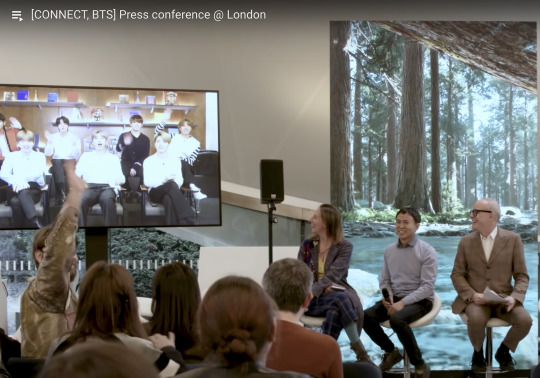
A good explanation of what CONNECT, BTS appeared on DAZED, January 14, 2020.
It was a huge wide-ranging global art project to link visual art to music art. This is one of the installations in New York City:

Then we see scenes of them arriving at Incheon Airport in February 2020.
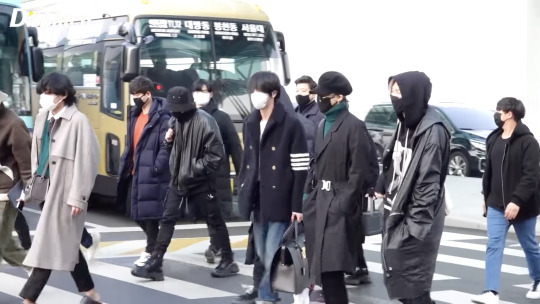
In February 2020, they were about to embark on the MOTS world tour. They were really pushing into the western market, especially the United States. They were headed to the States to start promoting on the talk show circuit and for magazine interviews. Western media was all over BTS. The public relations hype for their tour was huge. It was going to be HUGE. BTS was HUGE. At this point in the documentary we see english speaking fans trying to buy tickets for this tour.
This was the beginning of the year that would be their magnum opus.
Leading the docu-series with this reminds everyone what was supposed to happen and the impact they hoped to make here in the United States, to ride the wave of their success as far as they could go until they had to stop. Keep in mind they did not have any full English songs yet.
As far as they knew, this would be the end as we knew it, the end of Chapter 1. We all know what was to follow the MOTS tour even though no one wanted to speak about it: Enlistment. Jin would enlist December 2020 even though rumblings of a potential military exemption were beginning to buzz.
This period of time and after was when MANY MORE became fans of BTS. MOTS:7 was a record-breaking album. They were riding HIGH.
The scene of them being told the MOTS tour was cancelled is gut-wrenching. It makes me think of the content they filmed that day (March 8, 2020 a music show?)
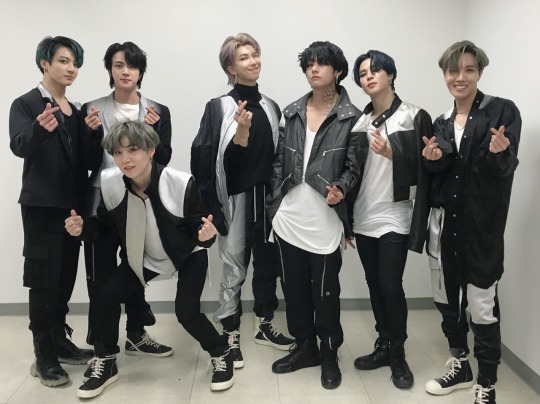
and I wonder at what point during the day they were told. Jimin and Hobi did a Vlive:
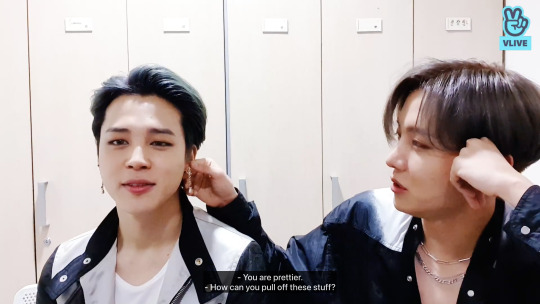
There are scenes of MOTS cancellation day in 2020 Memories, but not THIS scene of them being told the tour was cancelled.
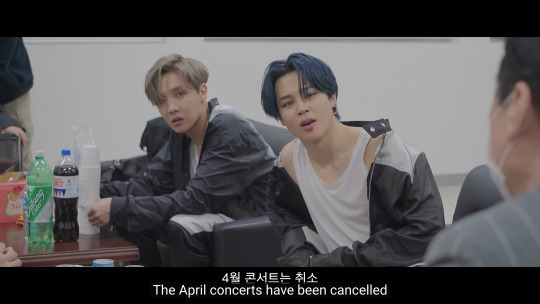
Then we jump forward to scenes of the members on the beach in LA (end of 2021) recalling their feelings and thoughts about the previous (almost) two years (the pandemic), reflecting on themselves. They had to overcome frustration, and change and adapt to reality.

Some of them were able to do that easier than the others. We know Jimin had a rough time, and it was challenging for Jin, Tae and Yoongi. Namjoon and Hobi worked on music. Yoongi wondered what was the point of even releasing music at all.
Jungkook says even though they were sad, something good came of it, they realized how much singing and dancing – performing – meant to them and how it superseded everything else.
Jimin says he and Namjoon spoke about how they needed to organize their thoughts over the years pertaining to the reasons they are doing what they do, how they feel and what they want to do, perhaps in order to help them sort through the pandemic aftermath and to serve as sort of an outline of how to proceed... it is sort of how the rest of this documentary series unfolds: the past, the present, the future.
Namjoon begins sharing thoughts of how he felt in the beginning and we flash back to 2013 debut. And the rest say their thoughts about how they began. This is a good way for newer fans to understand how they began: hearing their words as mature adults reminiscing about their roots and their start.

We’ve heard the general story of how they began with RM first and the rap line was assembled, then the vocal line was added with Jimin being the last to make the team. Bang PD recalls how impressed he was with Namjoon and knew this was someone special.
I’m positive there were opinions, decisions and choices made that we will never know because we weren’t there witnessing the moments. Whatever those decisions were, some probably forgotten in time or only known by a few involved in the process, however it happened, these seven individuals were settled upon and the team was created. The rest is history.
No one had an inkling of how much they would change the idol and kpop industry from what they then knew it to be.
Preparing for debut: one of the things Jungkook says is they expected hardships back then but looking back now, if he tried to do that now, he couldn’t do it, but back then, it was a given. Yoongi said they spent every moment in the practice room when they weren’t eating or sleeping… up all night practicing, so much stress and pressure amongst seven young passionate young men trying to make a good debut.…you can see the stress and fatigue on their faces.
Through all of that they reveal how hard they worked and how deep their commitment is. They felt it was important to convey this deep personal connection to each other they developed and how strong their bond is.
The events might be repetitive for people who’ve been Army since the beginning or since before 2020, but for the benefit of newer fans, presenting their story like this in the words of each member is important.
The author of the book Beyond the Story, Myung Seok Kang, explains how much of an underdog BTS was in the beginning. They were from a small, barely making it company and had the audacity to win Best New Artist in 2013 at the Melon Music Awards.
Hearing them state how they felt during that debut year, their young minds trying to process what was happening, thrust into society at such a young age, seeing their friends still being students, they had to reconcile within themselves that their lives were so different.
Jungkook (our now giant global pop star) said he remembers how small he felt hearing another really good singer in his in-ears as they prepared for a performance.
Watching them struggle to come up with the melody for Danger, working on it as a team from Jungkook, to Namjoon, to Yoongi, note by note… at such a young age and then not experiencing the expected success or gains after they had done that with the previous song… they thought this would be the end for them. All they wanted was to win first place at a music show…. CAN YOU IMAGINE?? The team was wavering.
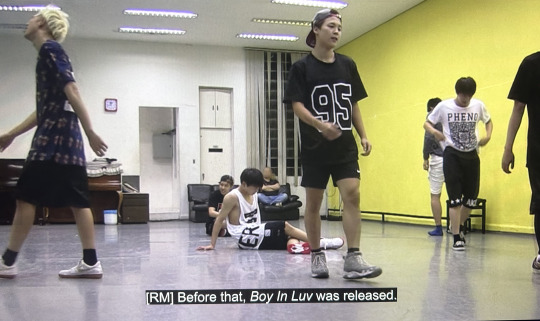
Newer fans need to be aware of this struggle.
All of this led to them writing the album, The Most Beautiful Moment in Life, the real start of their rise to stardom. They finally bagged that 1st place music show win with I Need U. The win gave them the confidence they needed to push forward and they kept winning with each song after that. Seeing their confidence grow after each win is exhilarating.
This album is the turning point in their career, the launch pad, so-to-speak.
And the song, Yet to Come (The Most Beautiful Moment in Life) is the thread connecting Chapter 1 to Chapter 2 and beyond. We will have a Most Beautiful Moment in Life 10th Anniversary in 2025. This docu-series is the bridge between what was then, now and what is … yet to come.
Review of Episode 2 next…
#if you can read the book it adds so much more#bts beyond the star#jimin#jungkook#hobi#namjoon#yoongi#jin#taehyung#what will the song be that connects YTC with the future?
58 notes
·
View notes
Text

Why These Imperfect Korean ‘Moon Jars’ Sell for Millions
Old, round, imperfect and beautiful — that’s how fans of Korean art describe the moon jar, or “dalhangari.”
These unassuming, plain white pots have entranced everyone from rapper RM, of K-pop sensation BTS, to philosopher Alain de Botton.
The former director of London’s Victoria and Albert Museum, Beth McKillop, has called the moon jar an “icon of Korean identity.” And if price is any indicator of popularity, one recently sold for over $4.5 million at a Christie’s auction.
This month, a rare example from the late 17th or early 18th century will go on sale at Sotheby’s in New York, where it’s expected to fetch more than $3 million.
“A large moon jar has always been expensive, but I think the big uptick in prices and value is… because their appeal is now global,” said Angela McAteer, Sotheby’s international head of Chinese art for the Americas and Europe, over video call. “You’ve got an international cohort of bidders competing for them, so it’s gone beyond the traditional connoisseur collecting community of Korean art.”

Huge price tags also result from the jars’ rarity. Although made for over a century in the royal kilns of Korea’s last kingdom, the Joseon dynasty, few are thought to exist today. Estimates for the number of larger ones (those more than 40 centimeters, or 15.7 inches, tall and wide) that have survived over the years range from 12 to 30.
Having passed through auction houses and antique dealers across the world, several of these are now in the collections of institutions like the British Museum and Boston’s Museum of Fine Arts, as well as in the hands of private collectors.
‘Owning a piece of happiness’
The first moon jars were created in the royal kilns in Gwangju (a city just outside Seoul, not the larger southern city of the same name) from 1650 to 1750. They were made from pure white porcelain and kaolin clay, and, following the neo-Confucian fashions of their day, the pots reflected values such as propriety, humility, frugality and purity. They were likely used at court and in upper-class homes as containers for food and liquids, or as decorative vessels.
In the mid-20th century, moon jars began gaining international appreciation thanks to influential admirers such as Japanese folk crafts scholar Yanagi Soetsu and British potter Bernard Leach, who bought one from a Seoul antique store in 1935. Leach once said that having a moon jar was like “owning a piece of happiness,” and would later give his to fellow potter Lucie Rie for safekeeping during World War II. It stayed in her studio until her death and was later acquired by the British Museum.
Charlotte Horlyck, lecturer in Korean Art History at the University of London’s School of Oriental and African Studies, wrote in the Art Bulletin journal that after World War II the moon jar “caught the attention of an early generation of postcolonial Korean artists and scholars who sought to restore Korean art history and national identity,” as the pieces “resonated with the visual language of international modernism and minimalism of the mid-20th century while remaining a distinctly Korean work of art.”
The moon jar’s allure
When Sotheby’s announced its forthcoming sale, the auction house described its 44-centimeter (17.3-inch) moon jar as an object that inspired, astounded and soothed those who “stand in its presence.” It’s a funny thing to say about a pot, to speak as if it’s alive, but the jars’ visceral, emotional impact on people is something that comes up time and time again in the literature.

Choi Sunu, a former director of the National Museum of Korea, has described the museum’s moon jars as being like companions, or muses that have inspired his writing and stirred his creativity. Bernard Leach admired the pots for their “natural unselfconsciousness.” In 2012, South Korea’s then-Unification Minister Yu Woo-ik used the pot as a metaphor symbolizing a reunified Korean peninsula (moon jars are created in two hemispherical pieces and joined in the middle).
More recently the rapper RM, of K-pop group BTS, posted a picture of himself hugging a modern-day moon jar on Twitter, telling fans that the pots made him feel calm.
“It’s hard for someone to really comprehend how a pot can make you feel that way,” said McAteer. “It has this real meditative presence. If you’ve sat in front of a great (painting by US artist, Mark) Rothko and you feel this kind of palpable energy emanate from it, and you could sit for hours and just feel something in its presence — the moon jar has that too.”
“The more you look at it, the more there is to see. It looks different from every angle,” she added. “We had real issues with the photography and the catalog because it looks like a different piece every time you rotate it, or you change the lighting. The surface is just alive, you know.”
“You can see how the glaze coalesces; you see these spontaneous bursts of this blush color that’s happening in the firing. You can lose yourself in its surface.”
Modern masters
Modern Korean potters have been inspired by the jars, and a number have come up with their own homages. Ceramist Kim Syyong covers his pots with a black glaze, while Yun Ju Cheol’s versions look spikier like a pufferfish and Choi Bo Ram’s unvarnished, textured blue vases have a denim-like quality.
Others, like Kwon Dae Sup, have looked to closely recreate the process used by the potters of yore. The 71-year-old ceramist produces unadorned white jars and allows for all the beautiful imperfections produced to shine through. He works out of a studio in Gwangju, where the royal kilns that produced moon jars were once located.


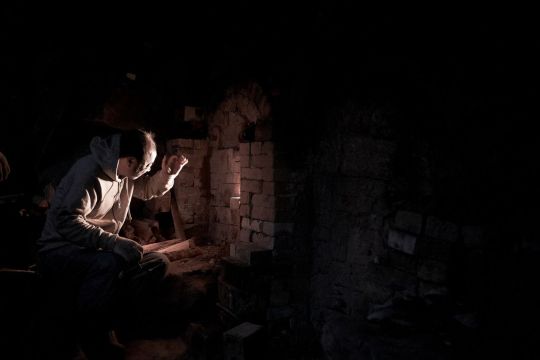
There’s a great deal of preparation that goes into making a moon jar traditionally. It’s labor-intensive: washing, sifting impurities from the clay, kneading and rolling it to remove air bubbles, carrying around these large hunks, not to mention hand throwing the clay itself to that oversized bowl shape without collapsing, and the work keeping a pine wood fire burning for 24 hours while the pot hardens in the kiln. Kwon also built his own kiln to replicate the old process as closely as possible.
“I do this because it’s fun,” he said in a phone interview. “Every time I make something, it’s novel … The quality of the material is different every time. The conditions in which I make the pots is new every time.”
Kwon said he also feels an emotional connection to the moon jar. As a student he was so moved by a one he saw in a Korean antique store that he decided they would be his life’s work. “They feel alive,” he said.
In a 2019 book on his work by Axel Vervoodt Gallery the potter is quoted saying he tries to produce art that needs no addition or subtraction. “I wish to create work that has an imposing presence but harmonizes with its surroundings regardless of where and when it is displayed. It should give peace of mind and a sense of comfort to all who look at it.”
By Christy Choi.
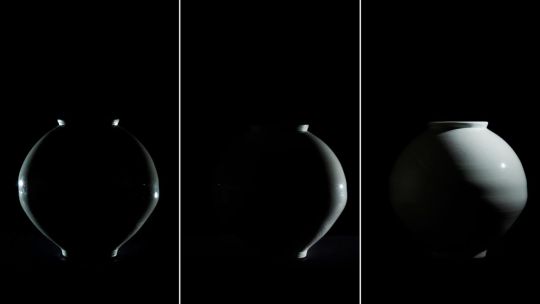
#Moon Jars#Why These Imperfect Korean ‘Moon Jars’ Sell for Millions#Dalhangari#Joseon dynasty#pottery#porcelain#Bernard Leach#Lucie Rie#Kwon Dae Sup#ancient artifacts#archeology#archeolgst#history#history news#ancient history#ancient culture#ancient civilizations#korean history#korean art#art#artist#art work#art world#art news#long reads
127 notes
·
View notes